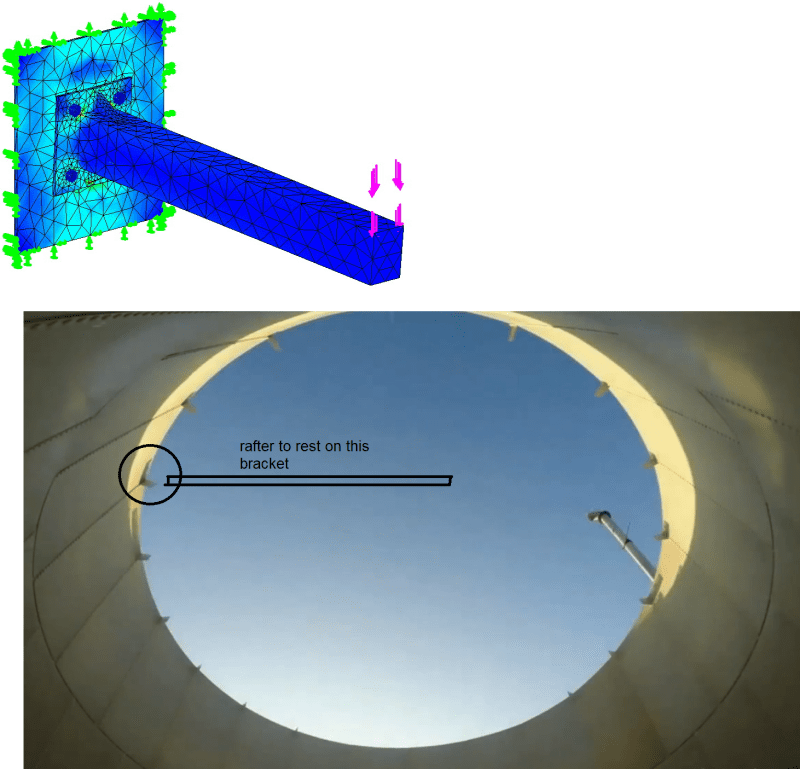I couldn't find any reference but a tiny one (I will mention it at the end of this text) about how to derive the stress (even an approximation of it) of a shell under a point load acting along its surface. For instance: checking whether the loads exerted by a rafter attached to a shell is acceptable or no. The only thing close I could find is the design of anchor bolt chairs connected to a tank in AISI T192, but this is a special case I suppose and is not useful for the general case.
Any help is greatly appreciated. I will end up doing a SAP model, but I hate to take this route and not have even something rough done on Excel.
While the image below show moments being transferred, that is not important for me. At least I could have a pinned connection with only an axial load.
Regards

Any help is greatly appreciated. I will end up doing a SAP model, but I hate to take this route and not have even something rough done on Excel.
While the image below show moments being transferred, that is not important for me. At least I could have a pinned connection with only an axial load.
Regards

